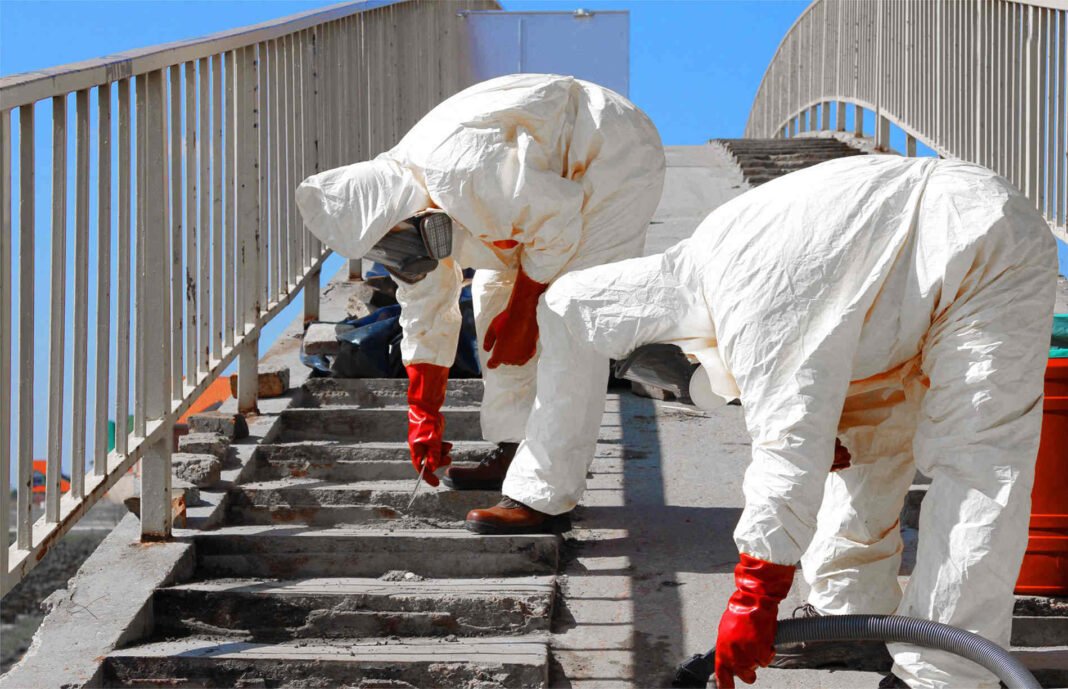Professionals in asbestos abatement should only handle, remove, and discard asbestos. Abatement specialists may safely handle asbestos if they follow the rules. Asbestos exposure can occur if the material is mishandled during Asbestos removal in Brisbane. Asbestos-related illnesses, such as mesothelioma, can strike anyone who has been exposed to it.
Asbestos Safety: What’s the Big Deal?
To avoid asbestos exposure, asbestos is to be handled carefully in Brisbane. Asbestos fibres can become airborne if improperly handled.
If you inhale asbestos fibres, they can get trapped in the linings of your lungs, abdomen or heart, which can cause serious health problems. Asbestosis, lung cancer, and mesothelioma are illnesses resulting from asbestos exposure.
The Benefits of Hiring an Asbestos Removal Company for Your Residence
Toxic laws and product prohibitions have led to decreased asbestos use in Brisbane. Antique items and materials might pose a risk to the general population. In a repair or demolition, asbestos-containing materials may come into contact.
Asbestos abatement companies in Brisbane should be contacted if building materials are damaged or cracked. Generally speaking, it is okay to use asbestos-containing items if they are not damaged. On the other hand, homeowners should watch these items for signs of wear or damage. The general population should have an asbestos removal firm evaluate the problem. Asbestos abatement experts can either encapsulate or remove the asbestos if necessary.
Locating and Removing Asbestos-Infested Materials
Thousands of objects contain asbestos, including construction materials, automobile components, and consumer goods. Many industries relied on asbestos because of its long-lasting properties and resistance to fire. From the 1930s through the mid-1970s, it was a common ingredient in food goods.
National surveys on friable asbestos were released in 1984 by the Environmental Protection Agency (EPA). According to the EPA, twenty % of public and private buildings possessed friable asbestos at the time.
When and How to Remove Asbestos from a Building
Asbestos products and materials can pose a risk to everyone who handles them. Asbestos fibres can readily get airborne if the material is already cracked or damaged.
Asbestos has been found to have no safe exposure limit, according to research. For safety, only trained specialists should handle and remove asbestos.
Experts in the field of reduction are well-versed in federal and state regulations. An abatement professional must be adequately trained and accredited by the EPA.
Testing and Mitigation of Asbestos
When it comes to probable asbestos-containing materials, homeowners and building owners in Brisbane should regard them. Individuals should avoid the area until an inspector has the opportunity to conduct a thorough examination of the items.
The first step is to have a qualified expert visualise the area to look for any dangers. After that, a portion of the suspect substance will be removed by an inspector. Asbestos content will be determined by laboratory technicians using the samples.
The Methods Applied in the Elimination of Asbestos
Professionals may suggest encapsulation or reduction depending on the state of the asbestos components. Specialists will cover the asbestos with a sealant during asbestos removal in Brisbane. Fibres will not be able to escape the coating and end up in the atmosphere.
Connect your site with the best in your industry. Our backlink generator strategy improves SEO, boosts visibility, and drives traffic that converts.
The materials may have to be removed if the damage is too extensive. The following are the steps involved in the removal of asbestos:
- To avoid the spread of asbestos fibres, turn off the air conditioning and plug the vents.
- Apply a layer of plastic sheeting to close off the area.
- Clean the work area with wet cleanup equipment and HEPA filter vacuums.
- Ensure that all items taken from the site are stored in correctly identified containers and are leak-tight.
- Full-face respirators and coveralls should be used by workers in Brisbane who remove asbestos-containing items. Workers must follow decontamination procedures once they’ve concluded their task. Keeping filthy clothing in a locker is a good example. Before going out in public, they should shower and change in a clean room away from the workplace.

